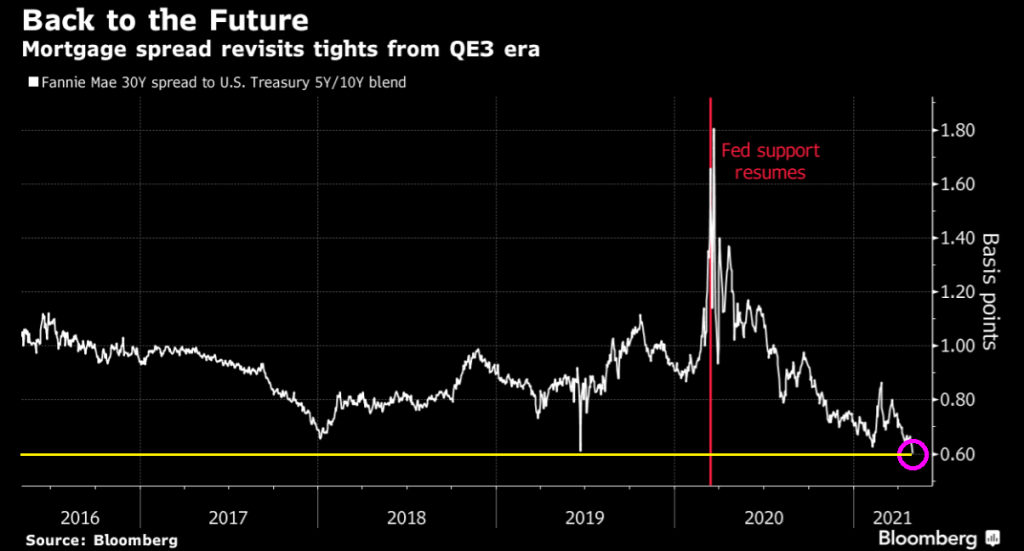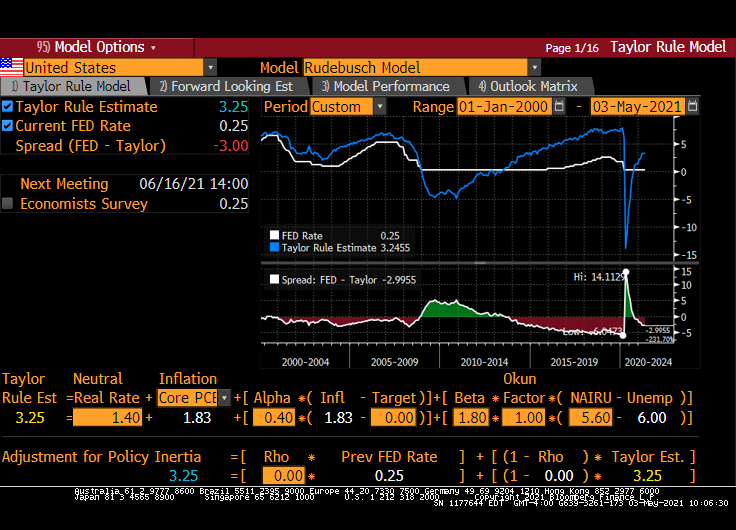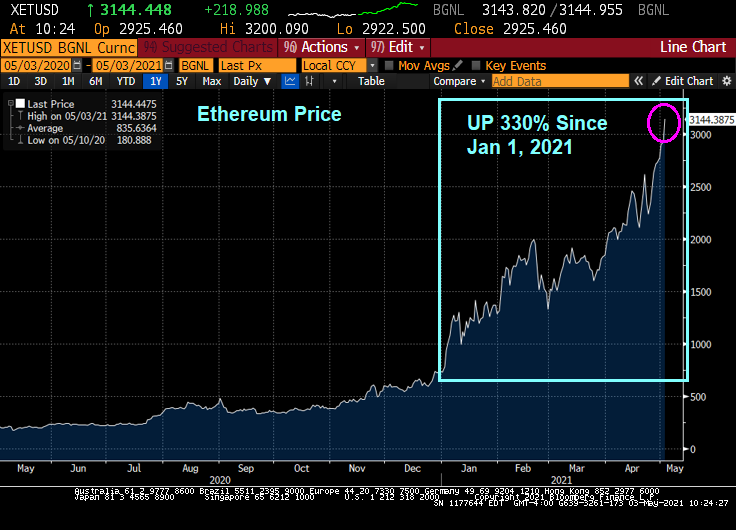This reminds me of Roberta Flack’s song “Killing Me Softly.” Except it is The Federal Reserve killing the MBS market spreads. And not softly, either
Mortgages ended April with one popular valuation metric at its tightest spread since September of 2012, back when the Federal Reserve announced what would come to be labeled “QE3.”
That name was applied as it was the central bank’s third round of quantitative easing since the collapse of the Great Moderation in 2007. Markets are now on their fourth round of QE — the latest started in March 2020 — which has helped drive the Fannie Mae 30-year current coupon spread over a blend of the 5- and 10- year Treasury yields to 0.60% on Friday.
The Fed statement from September 13, 2012 declared that in addition to $40 billion a month in mortgage-bond purchases, it also expected the federal funds rate to stay at “exceptionally low levels” at least through mid-2015. The bank would go on to purchase $1.4 trillion in agency mortgage bonds through October 2014.
Today, the Fed Chair Jerome Powell has been unmistakably firm that he intends to keep QE4 at its current pace — adding $40 billion MBS per month — at least over the near-term. Consensus is for it to last through year-end. The bank has purchased nearly $2 trillion mortgages so far this round of QE.
So the question that hangs over the mortgage market remains the Fed’s time-line to begin tapering its mortgage purchases. Morgan Stanley analysts noted on Friday that “mortgages are snug on most every metric.” That makes it difficult to argue that they are set to tighten further, even with the central bank holding a heavy supportive thumb on the sector’s valuation scale.
For now, April saw the U.S. MBS index earn 0.11% in excess return over Treasuries. The month of May, historically, has offered average excess return of -0.11% over the last ten years, the third worst compared to all the other months of the year during that time frame.

The Great Modernization? Essentially this means ignoring sensible Federal Reserve guideline like the Taylor Rule which now suggests that The Fed Funds Target rate should be 3.25%, but is being held at 0.25%.

To paraphrase the musical “Cabaret,” volatility makes the trading world around.
Ethereum, the crytpocurrency, is up 330% since January 1, 2021. A sign of the times?
